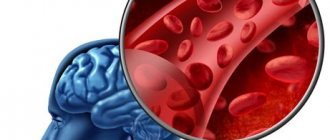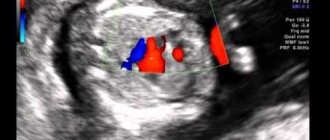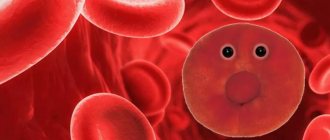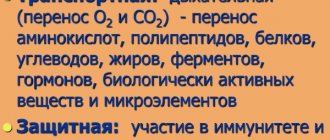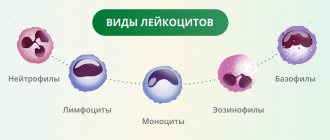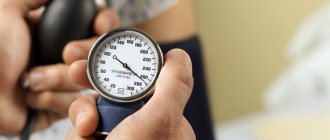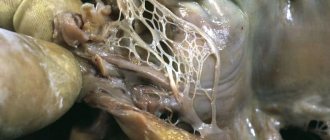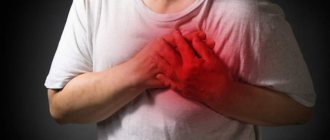Bilirubin is a bile pigment consisting of obsolete red blood cells. It enters the blood in a strictly defined amount. The level of bilirubin in the blood of men depends largely on age and diet. Serious changes in concentration often indicate the presence of a disease that requires treatment. Typically, the causes of increased bilirubin concentrations are liver and gallbladder diseases. Therefore, doctors advise periodically donating blood for analysis and, in case of deviations from the norm, conducting a detailed examination.
How is bilirubin formed and what is its role in the body?
Bilirubin is a product of the breakdown of hemoglobin in the liver, bone marrow and spleen. A popular theory is that bile pigment is the main cellular antioxidant that binds free radicals.
The following types are distinguished:
- Indirect, or free. Produced by the tissues of the spleen during the destruction of old red blood cells. Insoluble, binds to albumin, penetrates the liver, where it is converted directly.
- Straight. It has low toxicity and is highly soluble in water.
Indirect bilirubin is highly toxic. Exceeding its norm negatively affects the condition of the liver and brain.
Types of bilirubin: direct, total and indirect
The indirect fraction is toxic to the human body and can penetrate the blood-brain barrier. It is formed during the breakdown of hemoglobin. Due to the high degree of lipophilicity (affinity for organic fats), it easily penetrates the cytoplasmic membrane of the cell and then into the mitochondria. The result is a disruption of metabolic and energy processes in the cell.
Transport of the indirect fraction to the liver is carried out by binding to simple proteins albumin. Its detoxification (neutralization) occurs in the liver by adding a sugar-containing component - glucuronic acid. The resulting stable complex of the direct fraction, together with bile, is transported to the small intestine.
Further metabolism leads to the restoration of the direct fraction to urobilinogen. One part goes into the enterohepatic circulation of bile acids and returns back to the liver, and the other goes into the enterohepatic urobilinogen cycle with conversion to the yellow pigment urobilin.
Bilirubin is excreted in the form of stercobilin in feces (a small part in the form of stercobilinogen is excreted in the urine).
The total fraction is the total amount of direct and indirect bilirubin. During laboratory analysis, the direct and total fractions are determined, and the indirect fraction is determined by the calculation criterion, calculated as the difference between the total and direct fractions.
Read further: What is bilirubin in a biochemical blood test, how is it designated and interpreted?
How to prepare for the test: diagnostic features
Bilirubin in men is determined by a biochemical blood test. For planned biochemical studies it is necessary to prepare:
- A few days before blood sampling, avoid alcohol, fried foods, and spicy foods.
- In the morning before the test, do not eat, drink juices, carbonated drinks, coffee or tea.
- Do not smoke before blood collection.
On the day of the analysis, it is forbidden to have breakfast. Donate blood on an empty stomach.
Sometimes, if the condition worsens, urgent analysis is necessary. During an emergency examination, small errors in readings are acceptable and no special preparation is required.
3.Preparation for analysis and how is analysis carried out?
You should not eat or drink 4 hours before a blood test for bilirubin. And you need to warn your doctor if you are taking any medications, suffer from allergies to medications, have problems with blood clotting, or are pregnant.
In young children, a blood sample for bilirubin testing is usually taken from the heel. In addition, there is a skin screening test for bilirubin in newborns, which does not require pricking the skin and taking a blood sample. In adults, blood for bilirubin is taken from a vein. Bilirubin levels can also be measured in urine. As a rule, urine does not contain bilirubin. And if traces of it are detected during the analysis, this may mean that bilirubin is not removed from the body by the liver as it should be.
About our clinic Chistye Prudy metro station Medintercom page!
Types and norms of bilirubin in men by age: table
The concentration of pigment in the blood of both sexes differs slightly. But men tend to have a slightly higher level compared to women. This is due to the high content of red blood cells in the blood of men. The minimum amount is observed in young people under the age of 21. The concentration gradually increases and reaches a peak by the age of 30. Then there is a gradual decline, and by the age of 60 the lowest rate is noted.
Bile pigment is found in small quantities in blood plasma. Exceeding the norm signals problems with the liver and impaired bile flow. In men, Gilbert's syndrome, in which bilirubin increases, is diagnosed many times more often (about 10 times) than in women.
The norm of bilirubin in men is determined according to the table:
| Man's age | Norm in µmol/liter |
| 17–20 years old | 3–8 |
| From 21 to 30 | 3,8–19 |
| 31–40 | 3,8–18,5 |
| 41–50 | 3,9–18,7 |
| After 50 years | 3,8–18,5 |
| From 60 years old | 3,7–18,5 |
The definition of total bilirubin includes indicators of direct and indirect in the amount of:
- The normal level of direct bilirubin in a man’s blood is 78–80%.
- The rate of indirect, highly toxic, is 20–22%.
Content in quantitative ratio in an adult male:
| Type of pigment | Amount in µmol/liter (average value) |
| General | 8,4–19,8 |
| Indirect | Up to 20 |
| Straight | 0,1–8,1 |
In many ways, the indicators depend on lifestyle, nutrition, and the presence of bad habits.
By comparing standard indicators with the amount and proportions of direct and indirect pigment, doctors quickly identify a man’s health problems and select optimal treatment methods.
If total bilirubin is increased in men
Exceeding the norm in men may indicate the development of such pathologies:
- Prehepatic (hemolytic) jaundice is often observed in newborn boys if their blood is incompatible with the mother’s blood according to the Rh factor or group. It may also be associated with congenital or acquired anemia.
- Hepatic jaundice (parenchymal) - liver damage against the background of viral hepatitis of various natures, toxic and autoimmune lesions.
- Subhepatic jaundice is associated with impaired movement of bile, pancreatic tumors, metastases and other causes.
Signs of changes in bilirubin in the blood
The disease is indicated not only by the result of a blood test, but also by external signs. With an increase in the amount of bilirubin in plasma, the following is noted:
- Yellow skin tone. A similar symptom is sometimes provoked by an increased concentration of vitamin A, pathologies of the pancreas or thyroid gland. With hyperbilirubinemia, the sclera of the eyes necessarily turn yellow - this sign allows you to more accurately determine the disease.
- Bitter taste in the mouth.
- Periodic nausea and vomiting.
- Feeling of heaviness in the area of the right hypochondrium.
- The stool is discolored.
- The pigment accumulates in the urine, so its color resembles dark beer.
Reasons for deviation from the norm
Changes in this indicator indicate problems in the body. Increased or decreased concentrations indicate specific pathologies.
Promotion
This means that the liver simply does not have time to process the indirect pigment. Hemolysis (breakdown of red blood cells) occurs rapidly. If liver cell decomposition (necrosis) occurs, hepatocytes are unable to perform direct functions, and toxic bilirubin accumulates.
Excess of indicators is observed in the following diseases and conditions:
- Gilbert's syndrome. A hereditary disease that most often affects representatives of the stronger sex. According to statistics, out of every 100 patients, 90 are men.
- Dubin-Johnson syndrome and Rotor syndrome. Genetically caused jaundice.
- Liver diseases, for example, cirrhosis, hepatitis.
- Vitamin B12 deficiency. A lack of vitamins disrupts hematopoietic processes - red blood cells quickly disintegrate, and the concentration of bilirubin increases.
- Cholelithiasis. As a result of the blockage, the bile ducts swell and bile does not exit the bladder. Indirect bilirubin easily penetrates into the blood, causing jaundice.
- Worm infestation.
- Congenital anemia, in which red blood cells are rapidly destroyed.
- Acquired anemia caused by lupus erythematosus, rheumatoid arthritis, lymphorganulomatosis. Also accompanied by rapid destruction of blood cells.
- Syphilis stages 2–3.
- Sepsis.
- Internal bleeding.
- Typhoid fever.
Often, a man’s pigment level is elevated due to taking medications. Typically, the provocateurs are Levomycetin, Aspirin, and Insulin. Men who work at chemical plants and do not follow safety precautions are also at risk of exceeding concentrations. Therefore, employees of such enterprises are recommended to undergo preventive examinations 1–2 times a year with mandatory blood donation for bilirubin.
Often an overestimated concentration is detected in a child. Approximately 80% of newborns have physiological jaundice. Usually the problem indicates that the baby is premature. The concentration of bilirubin in newborns sometimes reaches 140–240 µmol/liter. If there are no problems with the liver, the indicator returns to normal during the first 2 weeks of life. When the concentration remains elevated, there are risks of genetic disease.
In older children, both male and female, increased concentrations occur as a result of infectious diseases, as well as treatment with antibiotic drugs, sulfonamides, and hormonal agents.
Decline
A reduced level of bilirubin in a man’s blood is not accompanied by a significant health hazard. Often the pigment concentration drops if a man:
- often drinks coffee and strong tea;
- systematically experiences stress;
- is in a depressed state.
However, recently a theory linking low pigment concentrations with diseases of the cardiovascular system, in particular ischemia, has been confirmed. Therefore, if there is insufficient amount of pigment in the blood, a man needs to consult a cardiologist and undergo a detailed examination.
An increase in the indicator: a variant of the norm or a sign of pathology?
The maximum values are typical for newborn babies. According to statistics, every second full-term baby experiences physiological jaundice. For premature babies, the incidence rate exceeds 80%.
Jaundice is not a pathology and normally goes away within 2 weeks. In the case of a protracted process, the newborn may be shown phototherapy (lighting with blue spectrum rays) or blood transfusion (with a critical increase in bilirubin levels and signs of damage to the central nervous system).
In adult men, exceeding the permissible values, without exception, is a sign of the disease. For a more accurate differential diagnosis, it is necessary to determine a set of additional laboratory tests (levels of aspartate aminotransferase, alanine aminotransferase, etc.) and instrumental examination methods.
The main reasons for increased bilirubin in men:
- hemolytic anemia, accompanied by excessive destruction of red blood cells;
- non-hemolytic familial jaundice (Gilbert's syndrome) is a benign pathology characterized by a moderate increase in the level of bile pigment in the blood;
- Crigler-Nayyar syndrome is a severe congenital pathology in which a toxic indirect fraction affects the human nervous system;
- blockage of the bile ducts with stones;
- hepatitis of viral or alcoholic etiology;
- cirrhosis of the liver;
- oncopathology of the liver or pancreas;
- congenital absence or underdevelopment of the biliary tract;
- infection with helminths from the Echinococcus family;
- use of hepatotoxic drugs;
- systemic infectious pathologies;
- purulent inflammation of liver cells and loss of their functional activity.
How to normalize bilirubin metabolism
It is important to keep the level of the substance normal, but traditional methods are useless here. It is necessary to identify the cause of the pathology and undergo treatment with drugs, strictly following the doctor’s instructions. In case of liver disease, a man will have to go to hospital and adhere to a strict diet. If the concentration disorder is caused by blockage of the bile ducts with stones, they resort to surgery.
Although hereditary pathologies are not amenable to drug therapy, the man’s condition is maintained with periodic red blood cell transfusions. In case of severe genetic diseases, excision of the spleen is recommended.
